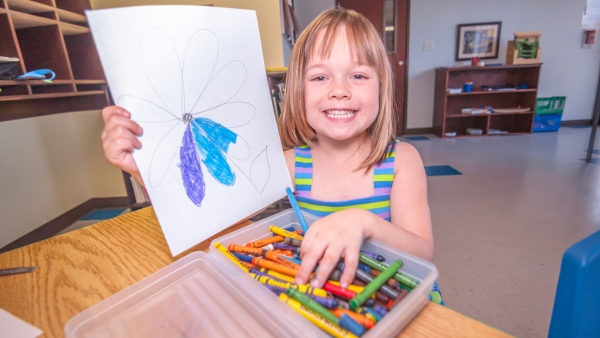
The Montessori method isn’t as complicated as you might think. This educational approach models real-life experiences and teaches a child the skills they will need to succeed in their daily adult life.
Learning Through Experience
Quite possibly the most important aspect of the Montessori philosophy is that children learn best through hands-on experiences. Instead of reading about abstract concepts, students are encouraged to try things for themselves and engage with concepts on a sensory and physical level.
For each student, this means working with Montessori designed materials. The Montessori concept is based on teaching children with concrete materials to abstract concepts. Learning the meaning of a certain symbol (numbers and sounds). Then progressing to reading and mathematical equations.
Uninterrupted Work Time
One of the things that makes a Montessori school unique is that students are given a considerable amount of uninterrupted work time. It takes time to truly engage with a subject, and children of all ages benefit from being able to engage themselves with a lesson and repeat the same work until they feel they have mastered the work. Then through the teacher’s observation, the child will have a lesson on the next material that follows this particular lesson.
Montessori work periods typically occur at the start of the day. Students can choose where they sit, what they want to work on, who they want to work with, and how long they want to engage with any particular material, within reason. As students get older, they are given longer work periods and more complicated subjects to comprehend. The teachers always remain present to answer questions and give individual lessons through-out the work period.
Multi- Age and Skill Levels
Unlike traditional schools, Montessori schools don’t separate children by their age. Instead, children learn in a multi-age classroom environment comprised of students between the ages of three to six years of age for a primary classroom. This is the same format in the infant, elementary and middle school classrooms. This classroom style is an imitation of the real world and helps children learn to socialize with people of all ages.
This multi-age environment creates a place where the younger child can learn from an older child and the older students can model good behavior and give a younger child a lesson on a material that they have already mastered. Every child will eventually be the oldest student in the class, allowing them to experience a variety of different educational perspectives and benefits.
Finally, the multi-age classrooms also allow children to progress at a natural rate without comparing themselves with their peers.
When properly applied, these aspects of a Montessori education create engaged, enthusiastic, and socially adept students who are ready to take on the challenges of the world. Even if they transition into a public school, Montessori students often maintain their sense of independence and their love of learning well into their adult lives.





















